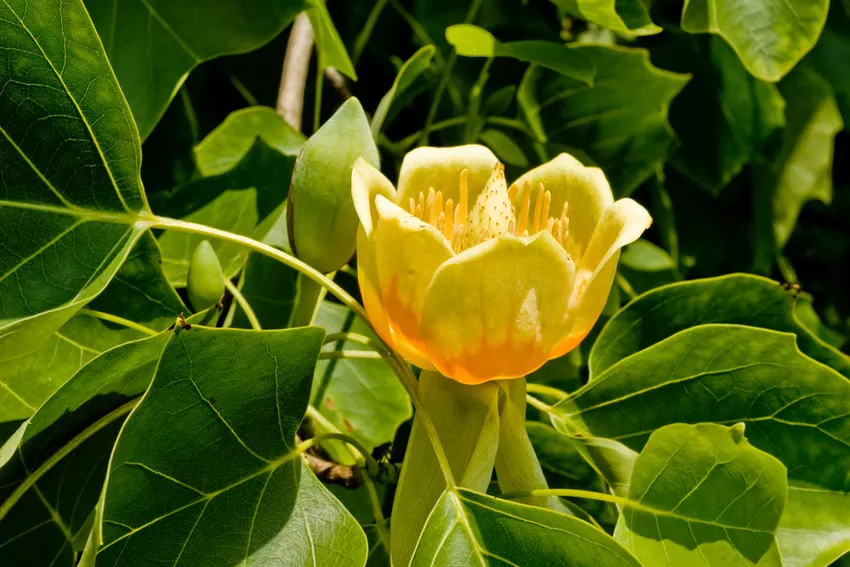The genus of tulip trees (bot. Liriodendron) includes only two species, namely the American and the Chinese tulip tree, which are very similar. There is also the related tulip magnolia and the unrelated African tulip tree.
 The American tulip tree flowers yellow
The American tulip tree flowers yellow
Tulip trees are named after the shape of their blossoms. It is reminiscent of the popular spring flower. The colors, on the other hand, are very different. While the tulip magnolia shows delicate pastel tones, the flowers of the African tulip tree are bright red.
The real tulip trees
Only the plants of the genus of the same name, i.e. the American and the Chinese tulip tree, are often counted among the real tulip trees. Sometimes the African tulip tree is also referred to as real, but it belongs to the trumpet tree family, is not hardy and is ideal as a houseplant or for planting in the conservatory.
Both the Chinese and the American tulip tree are suitable as garden plants. However, both of them become very large and take up a lot of space. They prefer a sunny location with nutrient-rich, rather acidic soil.
The Chinese tulip tree stays much smaller at around 18 meters in height and flowers in May. The American tulip tree blooms from April to May. It can grow about 30 to 40 meters high. Both trees shed their leaves in autumn but are hardy. Since they have quite sensitive roots, they should not be transplanted if possible.
Real Tulip Trees:
- African Tulip Tree, bot. Spathodea campanulata
- American Tulip Tree, bot. Liriodendron tulipifera
- Chinese Tulip Tree, bot. Liriodendron chinense
The "fake" tulip trees
Only the tulip magnolia is actually mentioned as a "fake" tulip tree. It is very common in home gardens. There it grows more like a bush and is about five to nine meters high. In spring it shows its delicate flowers, which can be white, pink or light purple. Not only does the tree grow with age, but also its abundance of flowers.
The Fake Tulip Tree:
- Tulip magnolia, bot. Magnolia x soulangeana
tips
The significantly smaller African tulip tree (maximum height approx. eight metres) needs warmth, it is not suitable for outdoor planting, but it is an ornament in the winter garden.